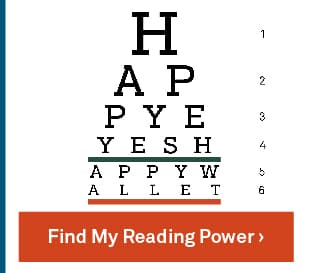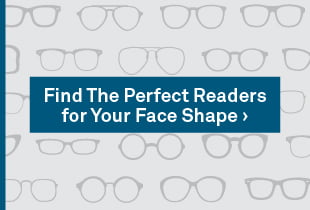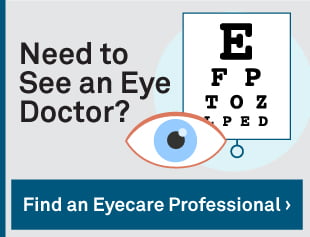
As you age, your relationship with your body is going to change: Your joints will creak, your memory will fade and you may find yourself turning to reading glasses when you’re curling up with a good book.
How does age affect your vision? What visual condition is leading you to have readers in your car, in your office drawer and various places around your house?
Let’s take a look:
Vision Changes with Age: What’s Normal?
Common age-related vision changes include blurry vision, night blindness, and loss of the ability to focus on near objects. You may also develop tunnel vision or experience central vision loss.
In many cases, corrective lenses, medication and/or surgery can help restore your quality of life.
Aging Eyes and Common Vision Problems
↓ Click infographic to enlarge ↓
Presbyopia (age-related farsightedness): One of the most common signs of aging is it gets harder to focus on near objects. For example, you may have trouble reading a menu or text messages on your phone. If you don’t already need vision correction, a pair of non-prescription reading glasses might be just what you need. The key is finding your reading glasses power.
Age-related macular degeneration (AMD): The macula is the part of the retina that’s responsible for your visual acuity (your ability to see clearly, drive, read, and even recognize faces). AMD is the top cause of central vision loss among older adults and can be diagnosed as wet (neovascular) or dry (non-neovascular).
Cataracts: Cataracts — the world’s leading cause of blindness — are the clouding of the eye’s lens. Symptoms include blurred vision and increased glare (which makes it difficult to drive at night). There are three types of cataracts: subcapsular, cortical, and nuclear. Nuclear cataracts are most closely linked with aging.
Glaucoma: This eye condition, caused by excess pressure inside the eye, is characterized by damage to the optic nerve and can lead to peripheral vision loss and blindness. Because there are no warning signs for glaucoma — and vision lost from the condition cannot be restored —, it’s important to get regular eye exams to try to catch it early. This is especially true if you have a family history of glaucoma or any other risk factors for it.
If you experience any changes in vision, including any of the symptoms listed of age-related vision conditions above, schedule an appointment with your eye doctor right away. After a comprehensive eye exam, you’ll have a better idea of what steps need to be taken (if any) and, if necessary, your doctor can refer you to a specialist for additional testing and care.
Can Eyesight Improve with Age?
If you feel like your eyesight is improving as you get older, it’s possible you’re just noticing that your vision has stabilized. However, if it really is improving, that may not be a good thing. Some improvements may actually be warning signs that worsening vision is on the way.
For example, one symptom of cataracts is “second sight,” in which your near vision can temporarily improve. But as cataracts develop, and your lenses cloud over, that improvement will vanish and it will become even more difficult for you to see.
The good news, at least about cataracts, is that it’s not all bad news. Cataract surgery is extremely common, safe and effective, and provides good chances of restoring any vision you may have lost to the condition.
Is Nearsightedness Affected by Age?
Those who deal with nearsightedness (myopia) in their youth typically experience a stabilization of their vision in their 20s, and from there, it’s possible for their myopia to worsen or, less commonly, for it to get a bit better. This is not to say that you will no longer be nearsighted, just that your prescription might change.
And there will probably come a time when you’re both near- and farsighted: Age-related farsightedness (presbyopia) is a common development for people over 40, so if (and when) it hits you, you may want to keep your reading glasses handy. Glasses with progressive lenses are another (albeit pricier) option.
If you’re having trouble reading the fine print, consider getting a pair of readers. With frames for every face shape and lenses to suit the sun or the screen, you’re sure to find the perfect pair.
SEE RELATED: Guide to Buying Reading Glasses






0 Comments